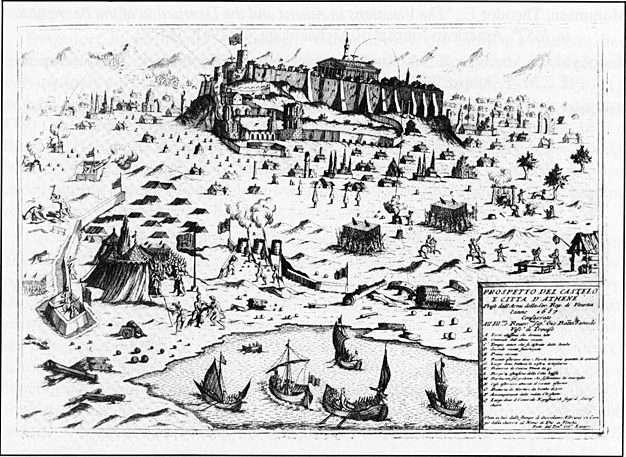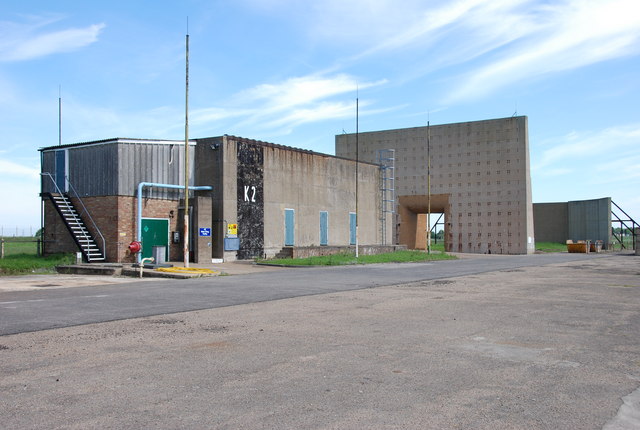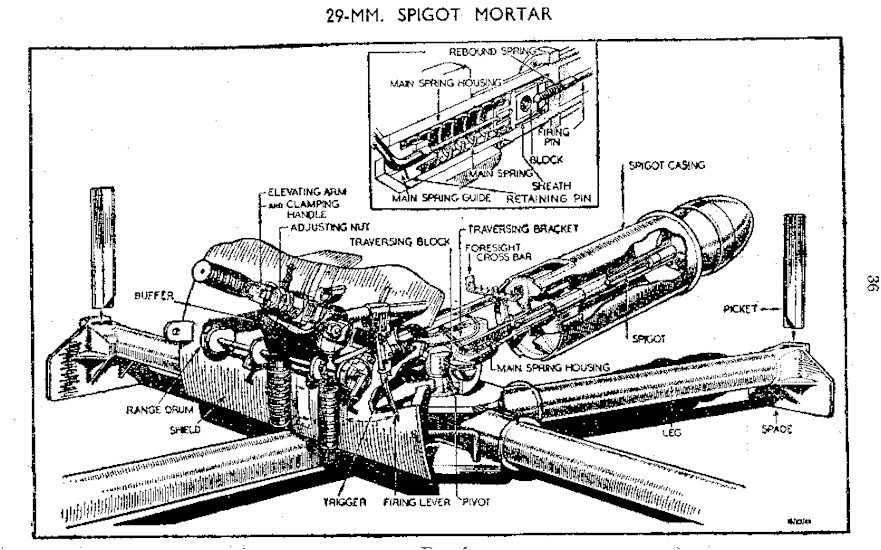|
MD1 (military R
Ministry of Defence 1 (MD1), also known as "Churchill's Toyshop", was a British weapon research and development organisation of the Second World War. Its two key figures were Major Millis Jefferis and Stuart Macrae, former editor of '' Armchair Science'' magazine. History MD1 began in "Military Intelligence Research" (MIR). MIR was a department of the War Office set up in 1939 under Lt-Col Joe Holland RE. Holland was the General Staff Officer Grade 1 (GSO1) and brought in Jefferis, also a Royal Engineers sapper and explosives expert, with experience in India, as GSO2 to head MIR(c) a division of MIR that was to develop weapons for irregular warfare. Needing special magnets, Jefferis brought in Macrae initially as an outside contractor but later to be brought into uniform and serve as his deputy. Between them they produced the limpet mine, a timed explosive that could be stuck to the underside of a ship. started in a room at the War Office, Macrae initially secured offices and ... [...More Info...] [...Related Items...] OR: [Wikipedia] [Google] [Baidu] |
Millis Jefferis
Major-General Sir Millis Rowland Jefferis KBE MC (9 January 1899 – 5 September 1963) was a British military officer who founded a special unit of the British Ministry of Supply which developed unusual weapons during the Second World War. Early career Born at Merstham, Surrey on 9 January 1899, Jefferis was educated at Tonbridge School and Royal Military Academy, Woolwich. From Woolwich he was commissioned into the Royal Engineers on 6 June 1918, during the final months of World War I, and after passing through the School of Military Engineering at Chatham, he was posted to the First Field Squadron RE in the British Army of the Rhine (BAOR).''Sir Millis Jefferis New Weapons of War (Obituary)''. ''The Times'', 7 September 1963 p10 column E. In 1920 he went to India and served with the Queen's Own Madras Sappers and Miners in the Third Field Troop at Sialkot. In 1922 he went into the Works Services in India as garrison engineer at Kohat and then at Khaisora which is tod ... [...More Info...] [...Related Items...] OR: [Wikipedia] [Google] [Baidu] |
Frederick Lindemann, 1st Viscount Cherwell
Frederick Alexander Lindemann, 1st Viscount Cherwell, ( ; 5 April 18863 July 1957) was a British physicist who was prime scientific adviser to Winston Churchill in World War II. He was involved in the development of radar and infra-red guidance systems. He was sceptical of the first reports of the enemy's V-weapons programme. He pressed the case for the strategic area bombing of cities. His abiding influence on Churchill stemmed from close personal friendship, as a member of the latter's country-house set. In Churchill's second government, he was given a seat in the cabinet, and later created Viscount Cherwell of Oxford. Early life, family and personality Lindemann was the second of three sons of Adolph Friedrich Lindemann, who had emigrated to the United Kingdom circa 1871 and became naturalised. – See especially p. 343. Frederick was born in Baden-Baden in Germany, where his American mother Olga Noble, the widow of a wealthy banker, was taking "the cure". After scho ... [...More Info...] [...Related Items...] OR: [Wikipedia] [Google] [Baidu] |
Limpet Mine
A limpet mine is a type of naval mine attached to a target by magnets. It is so named because of its superficial similarity to the shape of the limpet, a type of sea snail that clings tightly to rocks or other hard surfaces. A swimmer or diver may attach the mine, which is usually designed with hollow compartments to give the mine just slight negative buoyancy, making it easier to handle underwater. Types of fuses Usually limpet mines are set off by a time fuse. They may also have an anti-handling device, making the mine explode if removed from the hull by enemy divers or by explosions. Sometimes limpet mines have been fitted with a small turbine which would detonate the mine after the ship had sailed a certain distance, so that it was likely to sink in navigable channels (to make access difficult for other ships) or deep water (out of reach of easy salvage) and making determination of the cause of the sinking more difficult. Development In December 1938, a new unit was c ... [...More Info...] [...Related Items...] OR: [Wikipedia] [Google] [Baidu] |
Spigot Mortar
A mortar today is usually a simple, lightweight, man-portable, muzzle-loaded cannon, consisting of a smooth-bore (although some models use a rifled barrel) metal tube fixed to a base plate (to spread out the recoil) with a lightweight bipod mount and a sight. Mortars are typically used as indirect fire weapons for close fire support with a variety of ammunition. Historically mortars were heavy siege artillery. Mortars launch explosive shells (technically called bombs) in high arching ballistic trajectories. History Mortars have been used for hundreds of years. The earliest reported use of mortars was in Korea in a 1413 naval battle when Korean gunsmiths developed the ''wan'gu'' (gourd-shaped mortar) (완구, 碗口). The earliest version of the ''wan'gu'' dates back to 1407. Ch'oe Hae-san (1380–1443), the son of Ch'oe Mu-sŏn (1325–1395), is generally credited with inventing the ''wan'gu''. In the Ming dynasty, general Qi Jiguang recorded the use of a mini cannon ... [...More Info...] [...Related Items...] OR: [Wikipedia] [Google] [Baidu] |
Anti-tank
Anti-tank warfare refers to the military strategies, tactics, and weapon systems designed to counter and destroy enemy armored vehicles, particularly tanks. It originated during World War I following the first deployment of tanks in 1916, and has since become a fundamental component of land warfare doctrine. Over time, anti-tank warfare has evolved to include a wide range of systems, from handheld infantry weapons and anti-tank guns to guided missiles and air-delivered munitions. Anti-tank warfare evolved rapidly during World War II, leading to infantry-portable weapons. Through the Cold War of 1947–1991, the United States, anti-tank weapons have also been upgraded in number and performance. Since the end of the Cold War in 1992, new threats to tanks and other armored vehicles have included remotely detonated improvised explosive devices (IEDs). During the Russian invasion of Ukraine, drones and loitering munitions have attacked and destroyed tanks. Tank threat ... [...More Info...] [...Related Items...] OR: [Wikipedia] [Google] [Baidu] |
PIAT
The Projector, Infantry, Anti Tank (PIAT) Mk I was a British man-portable anti-tank weapon developed during the Second World War. The PIAT was designed in 1942 in response to the British Army's need for a more effective infantry anti-tank weapon and entered service in 1943. The PIAT was based on the spigot mortar system, and projected (launched) a 2.5 pound (1.1 kg) shaped charge bomb using a cartridge in the tail of the projectile. It possessed an effective range of approximately in a direct fire anti-tank role, and in an indirect fire role. The PIAT had several advantages over other infantry anti-tank weapons of the period: it had greatly increased penetration power over the previous anti-tank rifles, it had no back-blast which might reveal the position of the user or accidentally injure friendly soldiers around the user, and it was simple in construction. However, the device also had some disadvantages: powerful recoil, a difficulty in cocking the weapon, and early pro ... [...More Info...] [...Related Items...] OR: [Wikipedia] [Google] [Baidu] |
Nitroglycerin
Nitroglycerin (NG) (alternative spelling nitroglycerine), also known as trinitroglycerol (TNG), nitro, glyceryl trinitrate (GTN), or 1,2,3-trinitroxypropane, is a dense, colorless or pale yellow, oily, explosive liquid most commonly produced by nitrating glycerol with white fuming nitric acid under conditions appropriate to the formation of the nitric acid ester. Chemically, the substance is a nitrate ester rather than a nitro compound, but the traditional name is retained. Discovered in 1846 by Ascanio Sobrero, nitroglycerin has been used as an active ingredient in the manufacture of explosives, namely dynamite, and as such it is employed in the construction, demolition, and mining industries. It is combined with nitrocellulose to form double-based smokeless powder, used as a propellant in artillery and firearms since the 1880s. As is the case for many other explosives, nitroglycerin becomes more and more prone to exploding (i.e. spontaneous decomposition) as the temper ... [...More Info...] [...Related Items...] OR: [Wikipedia] [Google] [Baidu] |
Sticky Bomb
The "Grenade, Hand, Anti-Tank No. 74", commonly known as the S.T. grenade or simply sticky bomb, was a British hand grenade designed and produced during the Second World War. The grenade was one of a number of anti-tank weapons developed for use by the British Army and Home Guard after the loss of many anti-tank guns in France after the Dunkirk evacuation. The grenade was designed by a team from MIR(c) including Major Millis Jefferis and Stuart Macrae. It consisted of a glass sphere containing an explosive made of nitroglycerin and additives which added stability. When the user pulled a pin on the handle, the casing would fall away and expose the sticky sphere. Pulling another pin would arm the firing mechanism and the user would attempt to attach the grenade to an enemy vehicle. Letting go of the handle would release a lever that would activate a five-second fuse, which would then detonate the nitroglycerin compound. The grenade had several faults in its design. The Ordna ... [...More Info...] [...Related Items...] OR: [Wikipedia] [Google] [Baidu] |
Rocket Propulsion Establishment
The Rocket Propulsion Establishment at Westcott, Buckinghamshire on the site of the former RAF Westcott has made a number of notable contributions in the field of rocket propulsion, including input on the rocket design for the Blue Streak missile and the propulsion systems on Chevaline. It was also known as the Guided Projectiles Establishment and PERME Westcott (Propellants, Explosives and Rocket Motor Establishment, Westcott). For many years this establishment was regarded as so secret that it was not marked on Ordnance Survey maps, although it was present, from necessity, on maps for the use of pilots. History The establishment was set up in April 1946 under the Ministry of Supply. In the initial years a team of German scientists worked at the site, and examples of German weapons were on-site for study. These included the V-1 flying bomb; V-2; Feuerlilie F-55 subsonic missile; Messerschmitt Me 163B rocket-propelled interceptor; Rheintochter-1 anti-aircraft missile; Ruhr ... [...More Info...] [...Related Items...] OR: [Wikipedia] [Google] [Baidu] |
Fort Halstead
Fort Halstead was a research site of the Defence Science and Technology Laboratory (Dstl), an executive agency of the UK Ministry of Defence. It is situated on the crest of the Kentish North Downs, overlooking the town of Sevenoaks, southeast of London. Originally constructed in 1892 as part of a ring of fortresses around London, Fort Halstead was to be staffed by volunteers in the event of a crisis. The base became home to the Projectile Development Establishment, the Ministry of Supply and later was the headquarters of the Royal Armament Research and Development Establishment (RARDE). Design and construction Fort Halstead formed a part of the London Defence Positions, a scheme devised by Lieutenant General Sir Edward Bruce Hamley and implemented by the Secretary of State for War, Edward Stanhope, who announced the plan to Parliament in 1889. The scheme envisaged a line of entrenchments which would be dug in the event of war to protect the southern and eastern approaches t ... [...More Info...] [...Related Items...] OR: [Wikipedia] [Google] [Baidu] |
Ministry Of Supply
The Ministry of Supply (MoS) was a department of the UK government formed on 1 August 1939 by the Ministry of Supply Act 1939 ( 2 & 3 Geo. 6. c. 38) to co-ordinate the supply of equipment to all three British armed forces, headed by the Minister of Supply. A separate ministry, however, was responsible for aircraft production, and the Admiralty retained responsibilities for supplying the Royal Navy.Hornby (1958) During the war years the MoS was based at Shell Mex House in The Strand, London. The Ministry of Supply also took over all army research establishments in 1939. The Ministry of Aircraft Production was abolished in 1946, and the MoS took over its responsibilities for aircraft, including the associated research establishments. In the same year, it also took on increased responsibilities for atomic weapons, including the H-bomb development programme. The Ministry of Supply was abolished in late 1959 and its responsibilities passed to the Ministry of Aviation, the War Of ... [...More Info...] [...Related Items...] OR: [Wikipedia] [Google] [Baidu] |
Blacker Bombard
The Blacker Bombard, also known as the 29-mm Spigot Mortar, was an infantry anti-tank weapon devised by Lieutenant-Colonel Stewart Blacker in the early years of the Second World War. Intended as a means to equip Home Guard units with an anti-tank weapon in case of German invasion, at a time of grave shortage of weapons, it was accepted only after the intervention of Churchill. Although there were doubts about the effectiveness of the Bombard, many were issued. Few, if any, saw combat. Development With the end of the Battle of France and the evacuation of the British Expeditionary Force from the port of Dunkirk between 26 May and 4 June 1940, a German invasion of Great Britain seemed likely. However, the British Army was not well-equipped to defend the country in such an event; in the weeks after the Dunkirk evacuation it could field only twenty-seven divisions.Lampe, p. 3 (The German Army had more than 100 divisions at that time.) The Army was particularly short of anti-tank ... [...More Info...] [...Related Items...] OR: [Wikipedia] [Google] [Baidu] |









